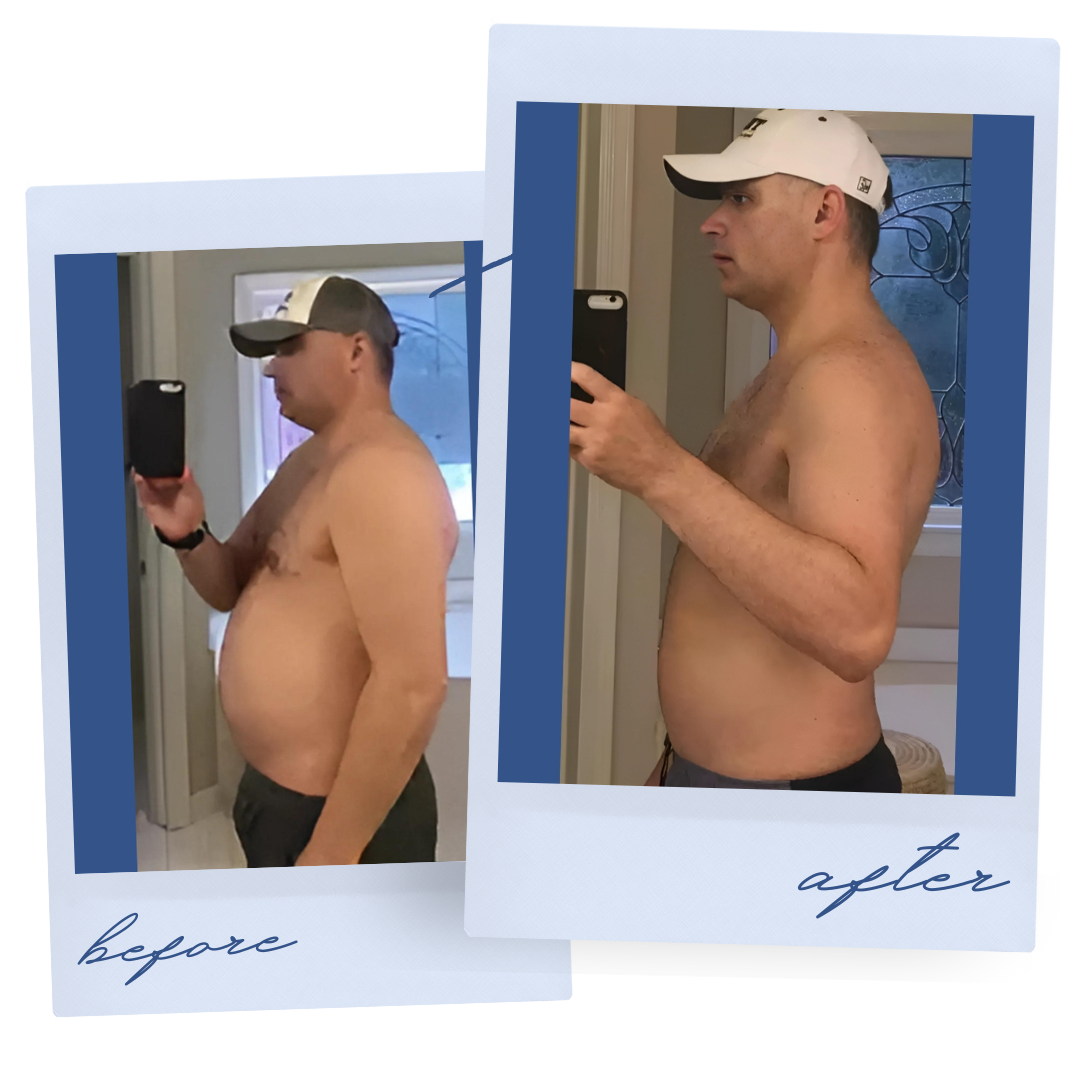Testosterone replacement therapy (TRT) can be a life-changing option for those experiencing low testosterone levels. From improving energy and mood to supporting overall well-being, TRT offers a range of potential benefits. However, starting therapy can feel overwhelming without the right guidance. In this blog, we’ll cover the best practices and essential tips to help you begin your TRT journey with confidence, ensuring a safe and effective experience.
Essential Takeaways for Starting Testosterone Replacement TherapyKey Takeaways
- Recognizing symptoms of low testosterone early is key to improving overall health and quality of life.
- Choosing a qualified healthcare provider with expertise in hormone therapy is crucial for safe and effective testosterone replacement therapy.
- Lifestyle changes, including diet and exercise, can enhance the results of testosterone replacement therapy and overall well-being.
Recognizing the Need for Testosterone Replacement Therapy

Testosterone replacement therapy is vital for those suffering from male hypogonadism, a condition marked by low testosterone that can profoundly impact both mental and physical health. Identifying the need for testosterone treatment is essential to improve your well-being. Various signs can indicate testosterone deficiency, and early detection of these symptoms can greatly enhance your life quality.
Individuals often experience an uplift in mood and sexual drive within mere days after initiating testosterone replacement. It takes about six weeks to observe the most noteworthy improvements. Over time, as hormone levels stabilize due to consistent replacement therapy, significant enhancements in overall health typically become apparent within one or two months.
It’s important to track these developments closely and maintain open communication with a healthcare provider when undergoing TRT to confirm that treatment progress aligns with expectations.
Identifying Symptoms of Low Testosterone
Frequent indicators of insufficient testosterone consist of the following:
- diminished energy
- decreased sexual interest
- difficulty achieving an erection
- loss of muscle strength
- emotional fluctuations
These manifestations can profoundly affect your day-to-day existence and overall well-being. It is estimated that 38.7% of males over the age of 45 experience depleted levels of testosterone, which typically decreases as one age.
Low testosterone, also known as hypogonadism, may trigger a variety of health concerns, including hypoactive sexual desire disorder, among other androgen deficiency syndromes. Should you find yourself dealing with several aforementioned symptoms concurrently, it might be prudent to contemplate initiating testosterone replacement therapy.
Early detection and management through a prescription for testosterone therapy could provide relief from these conditions. Acknowledging how suboptimal levels can detrimentally alter your life’s quality is crucial. Addressing such signs with your medical practitioner paves the way towards enhancement in wellbeing.
Reviewing Medical History and Age Factors
When deliberating on the use of testosterone replacement therapy, it’s vital to take your medical history into account. Health conditions,s including type-2 diabetes, metabolic syndrome, and cardiovascular disease, have associations with reduced levels of testosterone. Discussing these aspects with your healthcare provider is important to ascertain whether you are a fitting candidate for TRT.
As men age, maintaining healthy testosterone levels becomes increasingly important, especially for those over 40. The pituitary gland supports testosterone production through luteinizing hormone (LH), and understanding this process can help optimize hormone health. With a proper physical exam and a thorough review of medical history, identifying the causes of low testosterone is possible, paving the way for accurate diagnoses and effective treatment options. This proactive approach empowers men to maintain their vitality and overall well-being.
Diagnosing Testosterone Deficiency
Diagnosing testosterone deficiency, also known as male hypogonadism, involves a comprehensive approach that includes a physical examination, medical history review, and laboratory tests. Here’s a closer look at the steps involved:
- Medical History: Your healthcare provider will begin by asking about your symptoms, lifestyle habits, and overall medical history. This includes any medications you are currently taking, as some can influence testosterone levels. Understanding your background helps identify potential causes of low testosterone.
- Physical Examination: During the physical exam, your doctor will look for signs of testosterone deficiency, such as reduced muscle mass, decreased bone density, and changes in body hair. These physical indicators can provide valuable clues about your hormone levels.
- Blood Test: A crucial step in diagnosing testosterone deficiency is a blood test to measure your testosterone levels. This test is typically conducted in the morning when testosterone levels are at their peak. Consistent low readings across multiple tests can confirm a diagnosis of low testosterone.
- Hormone Level Tests: In addition to measuring testosterone, your doctor may order tests to check other hormone levels. This helps identify any additional imbalances that could be contributing to your symptoms.
- Sleep Study: If there is a suspicion of sleep apnea, which can affect testosterone levels, your doctor might recommend a sleep study. This test monitors your sleep patterns and breathing to diagnose sleep apnea.
- Prostate Examination: A prostate examination may be performed to check for any abnormalities that could be linked to your symptoms. This is particularly important as prostate health can be influenced by testosterone levels.
Selecting the Right Healthcare Provider
Choosing the right healthcare provider is vital when you embark on testosterone replacement therapy. A competent TRT practitioner will provide a secure and effective regimen designed specifically for your individual health requirements, ensuring you receive the correct treatment for low testosterone.
In searching for a healthcare provider, assess their credentials, available treatment options they offer, and feedback from their patients. It’s often reassuring to find a provider who has board certification in fields like urology or endocrinology, indicating specialized knowledge in hormone therapies such as testosterone replacement. Carefully comparing clinics by examining both conventional and holistic treatment methodologies offered can aid you in discovering the most suitable option tailored to your unique situation.
Key Qualities in a TRT Provider
It is crucial to choose a TRT provider that not only presents an extensive array of treatment options but also tailors their care to individual needs. Seek out providers with board certifications in pertinent specialties like urology or endocrinology, as this denotes substantial proficiency in hormone therapy and guarantees top-tier patient care.
Gleaning information from patient testimonials can be beneficial for understanding the effectiveness of treatments and gauging overall contentment with the services provided by the clinic. Assessing how the clinic integrates conventional and holistic approaches in its treatment plans is essential for ensuring comprehensive and efficacious therapy.
Understanding Your TRT Options

Understanding your testosterone replacement therapy options is key to making educated choices regarding your treatment. The primary goal of TRT is to reestablish normal testosterone levels and alleviate the symptoms tied to testosterone deficiency. A variety of delivery methods are accessible, each offering its own set of benefits and possible disadvantages.
Testosterone replacement functions by supplying the body with necessary testosterone, enhancing vitality, emotional state, and general healthiness. Beyond injectable forms, there exist alternative modalities for administering testosterone prescriptions, such as transdermal patches and topical creams. In subsequent sections, we will delve into the distinct advantages and important factors associated with each approach.
Testosterone Injections
Testosterone replacement therapy through injectable routes is widely recognized for its efficiency and affordability. These injections are typically given in large muscle groups once a week or every other week. Such administration ensures quick absorption of the hormone into the bloodstream, prompting an immediate elevation in testosterone levels.
Injections provide several advantages, including the capacity to directly infuse a substantial dose of testosterone, which can markedly alleviate symptoms associated with low testosterone levels. Nevertheless, this form may result in varying levels of testosterone when not dosed daily. It’s important that healthcare providers customize replacement therapy to consider each patient’s unique health conditions and requirements instead of applying uniform treatment protocols.
Although an economical option for administering testosterone replacement therapy, injections require consistent application and careful oversight to maintain desired outcomes effectively. A conversation with your medical professional about your particular health needs and lifestyle preferences can assist you both in deciding if injection-based testosterone replacement is indeed suitable for you.
Testosterone Gels and Patches
Utilizing gels and patches for topical administration presents an easy way to introduce testosterone into the body via absorption through the skin. These applications ensure a regular dispersal of testosterone, aiding in preserving uniform hormone levels. The daily use of these gels assists in evading the ups and downs often experienced with injection-based methods, ensuring more even testosterone levels over time.
On the other hand, there’s a possibility that employing these topical remedies might lead to irritation at the site on your skin where they’re applied and carries with it a chance that others could unintentionally be exposed to hormones if they come into contact with treated areas. It is essential when opting for a gel or patch as part of Testosterone Replacement Therapy (TRT) to follow usage guidelines scrupulously and weigh up any potential adverse effects carefully.
Oral and Synthetic Testosterone
Testosterone replacement therapy can be administered orally through tablets or capsules, offering a convenient option for many. However, other forms of testosterone replacement are often preferred for their broader safety and effectiveness.
There are also synthetic versions of testosterone available as an alternative, providing additional flexibility in treatment options. Consulting with your healthcare provider ensures you can choose the most suitable approach tailored to your specific needs for optimal testosterone replacement.
What to Expect During Initial TRT Weeks
Undergoing testosterone replacement therapy can result in a range of adjustments within the body as it becomes accustomed to rejuvenated levels of testosterone. Testosterone therapy aims to re-establish normal ranges of this hormone, potentially elevating mood and boosting energy. Embarking on long-term testosterone replacement necessitates thorough evaluation regarding its effects on heart health and possible links with prostate cancer.
To maintain your well-being while receiving replacement therapy, vigilance over adverse reactions is essential. Continuous engagement with your medical practitioner allows for prompt identification and mitigation of any issues that arise during treatment, ensuring modifications are made in a timely manner to optimize the course of treatment.
Early Benefits: Energy and Mood Improvements
Testosterone replacement therapy often leads to a boost in energy levels as one of its initial advantages. As testosterone levels return to normal, numerous individuals have noted enhancements in mood and mental health. The period before these benefits are observed can differ from person to person, with some men experiencing quicker responses than others.
It’s important to adopt a long-term perspective when undergoing testosterone replacement since the full array of benefits may unfold gradually over time. Consistent check-ins with your healthcare provider are beneficial for monitoring progress and confirming that the anticipated improvements in well-being due to replacement therapy are being realized.
Long-Term Management of TRT

Maintaining the advantages of testosterone replacement therapy necessitates active oversight, which encompasses consistent health evaluations and modifications tailored to personal reactions. Through regular medical examinations, adjustments to your testosterone replacement can be promptly made in accordance with how you individually react.
Monitoring Progress and Health Metrics
Monitoring testosterone levels and liver function through regular blood tests is crucial while undergoing testosterone replacement therapy (TRT). To ensure the safety and efficacy of TRT, it’s critical to conduct annual blood tests that gauge not only testosterone but also other health indicators. Hematocrit levels, liver function, and cholesterol should be closely observed for any possible complications that may arise from the treatment.
It is important to seek out healthcare providers who will keep a close watch on both free and total testosterone levels as well as additional pertinent hormones throughout the duration of therapy. Consistent follow-up appointments are vital in order to manage effectively the long-term application of testosterone replacement therapy.
Enhancing Results with Lifestyle Modifications
Maintaining a balanced diet and engaging in consistent exercise can substantially elevate the benefits of testosterone replacement therapy. When paired with habitual physical activity, TRT’s positive effects are markedly increased. Adjustments to one’s lifestyle, including dietary and exercise changes, can address prevalent issues connected to testosterone replacement.
For optimal outcomes from testosterone replacement therapy, it is crucial to combine it with sound stress management strategies and adequate sleep alongside a healthy diet. A regular fitness regimen coupled with proper nutrition greatly amplifies the effectiveness of TRT. Such lifestyle alterations not only bolster the advantages provided by testosterone replacements but also promote general health and wellness.
Taking the First Step Towards Better Health
Starting testosterone replacement therapy can be a transformative journey towards improving your well-being. By understanding when TRT is needed, selecting the right healthcare provider, exploring treatment options, and committing to ongoing maintenance, you can achieve optimal results. A combination of effective therapy and lifestyle adjustments is key to maximizing the benefits of TRT.
At the Atlanta Medical Institute, we specialize in testosterone replacement therapy in Atlanta, offering personalized care tailored to your unique needs. Our experienced team is dedicated to guiding you every step of the way, from initial consultations to long-term support. Take the first step towards feeling your best—schedule your free consultation today and discover how our holistic approach can help you reclaim your vitality.
Frequently Asked Questions
What are the common symptoms of low testosterone?
If you’re experiencing low energy, reduced libido, erectile dysfunction, decreased muscle mass, or mood swings, these could be signs of low testosterone.
It’s a good idea to consult with a healthcare professional to discuss your symptoms.
What factors should I consider when choosing a TRT provider?
When choosing a TRT provider, prioritize those who are board-certified, have positive patient feedback, and offer a variety of treatment options to suit your needs.
This will ensure you receive quality care tailored to you.
How can I enhance the results of my TRT?
To really enhance your TRT results, focus on a balanced diet, regular exercise, managing stress well, and getting enough sleep.
These minor lifestyle changes can make a huge, noticeable, and positive difference!




